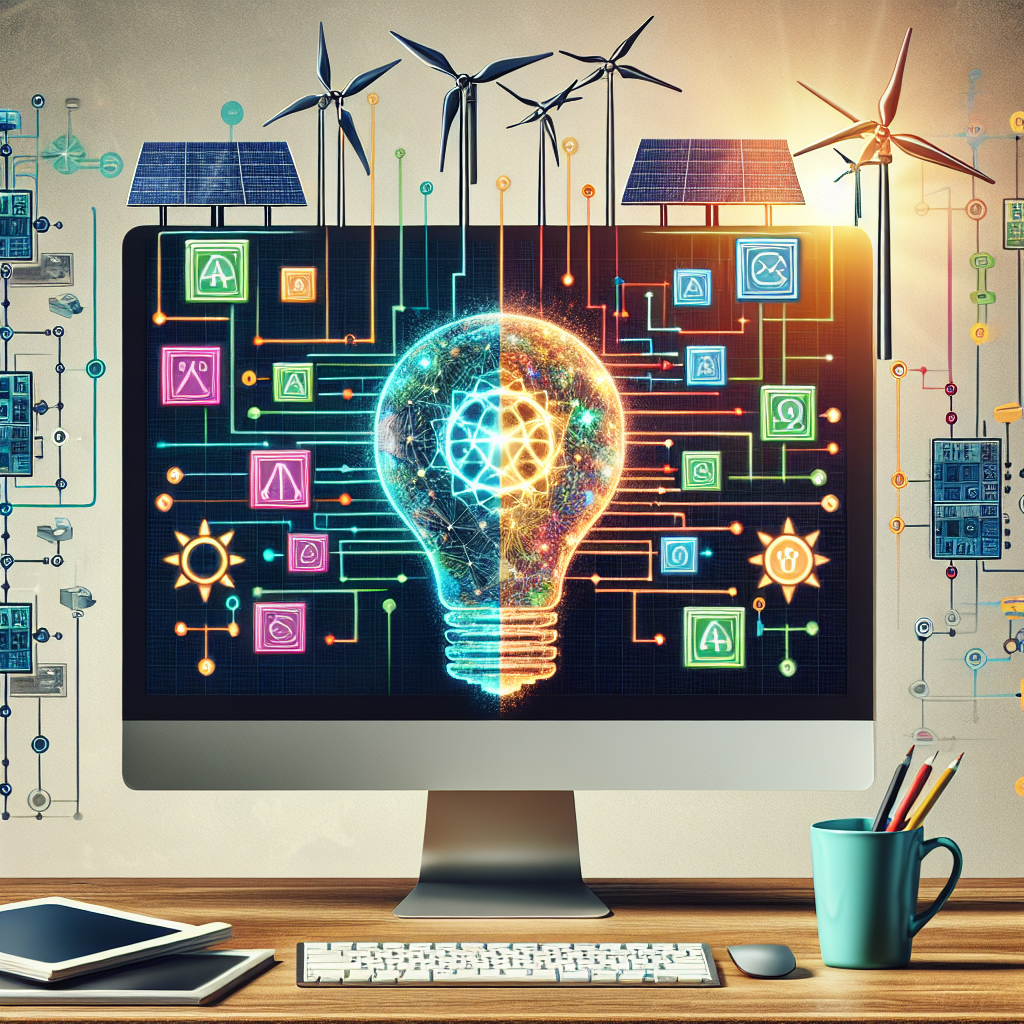AI and Machine Learning: The Future of Energy Efficiency
In recent years, there has been a significant push towards improving energy efficiency in various industries and sectors around the world. With the increasing concerns about climate change and the depletion of natural resources, finding ways to reduce energy consumption and minimize waste has become a top priority for governments, businesses, and individuals alike.
One of the key technologies that is revolutionizing the way we approach energy efficiency is Artificial Intelligence (AI) and Machine Learning. These advanced technologies have the potential to transform the energy sector by optimizing energy usage, reducing waste, and improving overall efficiency. In this article, we will explore how AI and Machine Learning are shaping the future of energy efficiency and what this means for the environment and the economy.
AI and Machine Learning in Energy Efficiency
AI and Machine Learning are being used in a wide range of applications in the energy sector, from optimizing energy production and distribution to improving the efficiency of buildings and appliances. These technologies have the ability to analyze vast amounts of data, identify patterns and trends, and make predictions and recommendations based on this information.
One of the key ways that AI and Machine Learning are being used to improve energy efficiency is through the development of smart grids. Smart grids are intelligent energy networks that use advanced technologies to monitor and control the flow of electricity in real-time. By using AI and Machine Learning algorithms, smart grids can optimize energy distribution, detect and respond to power outages, and manage energy demand more effectively.
Another area where AI and Machine Learning are making a significant impact is in the optimization of energy consumption in buildings. Smart thermostats, lighting systems, and appliances can be equipped with AI algorithms that learn from user behavior and adjust energy usage to maximize efficiency. For example, a smart thermostat can learn the occupant’s schedule and preferences and automatically adjust the temperature to save energy when no one is home.
AI and Machine Learning are also being used to optimize energy production and storage. For example, AI algorithms can analyze weather patterns and energy demand to predict when renewable energy sources such as solar and wind will be most effective. This information can then be used to optimize the operation of renewable energy systems and store excess energy for times when demand is high.
Benefits of AI and Machine Learning in Energy Efficiency
The integration of AI and Machine Learning in the energy sector has numerous benefits, including:
1. Improved Energy Efficiency: By analyzing data and identifying patterns, AI and Machine Learning algorithms can optimize energy consumption and reduce waste, leading to significant energy savings.
2. Increased Reliability: Smart grids and energy systems equipped with AI and Machine Learning algorithms are more reliable and resilient to disruptions, such as power outages or fluctuations in energy supply.
3. Cost Savings: By optimizing energy consumption and production, businesses and consumers can save money on their energy bills and reduce overall operating costs.
4. Environmental Impact: By reducing energy consumption and increasing the use of renewable energy sources, AI and Machine Learning can help reduce greenhouse gas emissions and mitigate the effects of climate change.
Challenges and Limitations
While AI and Machine Learning have the potential to revolutionize the energy sector, there are also challenges and limitations that need to be addressed. Some of the key challenges include:
1. Data Privacy and Security: As AI and Machine Learning algorithms rely on vast amounts of data to make predictions and recommendations, there are concerns about data privacy and security. It is essential to ensure that data is protected and secure to prevent unauthorized access or misuse.
2. Lack of Standardization: The energy sector is highly complex and fragmented, with different stakeholders using different technologies and systems. Standardizing data formats and communication protocols is essential to enable seamless integration of AI and Machine Learning solutions.
3. High Initial Costs: Implementing AI and Machine Learning solutions in the energy sector can be expensive, requiring significant investments in technology and infrastructure. However, the long-term benefits of improved energy efficiency and cost savings can outweigh the initial costs.
4. Skills Gap: There is a shortage of skilled professionals with expertise in AI and Machine Learning in the energy sector. It is essential to invest in training and education to build a workforce capable of developing and implementing these technologies.
Frequently Asked Questions
Q: How can AI and Machine Learning improve energy efficiency in buildings?
A: AI and Machine Learning can optimize energy consumption in buildings by analyzing data from sensors and devices, identifying patterns in user behavior, and adjusting energy usage accordingly. Smart thermostats, lighting systems, and appliances equipped with AI algorithms can learn from user preferences and automatically adjust settings to maximize efficiency.
Q: What role do smart grids play in improving energy efficiency?
A: Smart grids are intelligent energy networks that use advanced technologies, including AI and Machine Learning, to monitor and control the flow of electricity in real-time. By optimizing energy distribution, detecting and responding to power outages, and managing energy demand more effectively, smart grids can improve energy efficiency and reliability.
Q: How can AI and Machine Learning help optimize energy production and storage?
A: AI algorithms can analyze data from weather patterns, energy demand, and renewable energy sources to predict when and where energy will be most effective. This information can be used to optimize the operation of renewable energy systems, such as solar and wind, and store excess energy for times when demand is high.
In conclusion, AI and Machine Learning are transforming the energy sector by improving energy efficiency, reducing waste, and increasing the use of renewable energy sources. While there are challenges and limitations that need to be addressed, the long-term benefits of these technologies are clear. By investing in AI and Machine Learning solutions, we can create a more sustainable and efficient energy system for the future.

